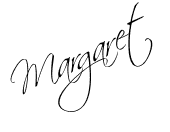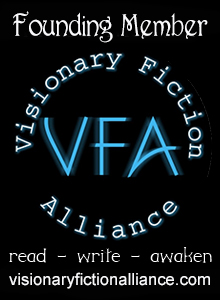
After ten years of writing fiction, dealing with such story elements as plot, dialogue, characterization, and style, I’ve finally reached the point where I understand the value of descriptive detail in making my writing come alive, raising it from a lump of clay to a fine work of art.
I punch, twist, slice, and carve my first drafts, while still wet and malleable, making them more precise and fresh.
But in order to add descriptive detail to my writing, I had to become more observant. I had to focus on everyday objects and occurrences, zero in on the seemingly unimportant little details, and then write them down.
After reading how I’d described a place that we’d visited together, a friend said, “I’m wondering if we attended the same event.” While she had focused on her particular interests, I had taken note of the texture of the walls and ceilings, the lighting, and the landscape–the small stuff–to help my future readers experience the scene as I had.
By paying attention to detail, my writing has improved, and will continue to improve as my skill increases.
Here, for example, are some of the signs I noticed while passenger in a car headed east on Highway 80 between Sacramento and Reno.
- Adopt a Highway
- Right Lane Ends 1/4 Mile Merge Left
- Traffic Fines Doubled In Construction Areas
- Roadwork Ahead
- Left Lane Does Not Stop
- Thru Traffic Merge Right
- Exit 14B
- Exit 14C
- Call Box SA80 146
- All Vehicles Access
- Safety Belt Law Enforcement
- Emerging Parking Only
- Weigh Station
- Exit 35 Miles Per Hour
- Speed Limit 65
- Radar enforced
- LEFT SHOULDER CLOSED 500 FT
- LANE CLOSED
- DO NOT ENTER WRONG WAY
- DETOUR
- TRU TRAFFIC MERGE LEFT
- Interstate 80
- RAMP 25
- Narrow Lanes, Exit 45 Miles Per Hour.
- Park and Ride Next exit
In addition I noticed, yellow solid lines, white dashes, and concrete dividers with tire marks on the side (ever wonder how these tire marks get there?).
And these are only a small portion of the things I noticed during our three hour drive. If I hadn’t been paying attention and writing them down, I wouldn’t have remembered even a fraction of them.
Would you know off the top of your head that:
- Constructions signs are orange diamonds?
- Traffic directive signs such as merging traffic, are yellow?
- Guide signs to direct travelers to the right exits are green?
- Red, white, and blue shields mark Interstates?
- Highways–even numbered roads run east-west and odd numbers run north-south?
Okay, so these facts are mundane and far from exciting. But you never know when such information will come in handy for the authenticity of one of your scenes.
Take note of what you see, hear, smell, taste, and feel when you go to the grocery store, stand in line at the post office or a bank, sit in a waiting room, and visit a hospital. It’s all those tiny details, from the bleeping of a heart monitor to an overheard conversation that can turn a generic, hackneyed scene into one that takes your writing to the next level.
Carry index cards or a small notebook in your pocket or hand bag. You’ll be amazed at the details you take for granted in your everday life and are unable to recall when it comes time to write that big scene.
TV commercials, comedy shows, and news programs contain troves of information. Take note. What do you see or hear that you’ve never noticed before? Make a habit of keeping a pad and pencil near your easy chair. Write down what you observe before you forget. You may find use for it later.
Happy writing.


Margaret, I completely agree about those little details. I had to work on that at first, as well. (Okay, I still work at it!) Activating all the readers' senses is an important part of the experience. We want them to smell the fresh bread baking, hear the distant train, feel the rough edges on a frayed jacket, etc. And all that is harder to do than it sounds.
great writing practice and fun 🙂 I often think of it as though you are in a foreign land. everything is new, unexpected and rapturous!
Hi Darcia. Yes, adding details to activate the reader's senses is truly harder than it sounds. That's why it's so important to take note, either on paper or in one's mind (really notice), of the details that surround us each day. All those little details make our writing more realistic and pull the writer in. I so appreciate reading novels and short stories full of specific and unique details. Often I think, I've been there, done that, but would never have thought of sharing the experience in this way. That's when I know the author has done his or her homework and that I'm in the hands of an artist. Thanks for stopping by and leaving your comment.
Hello Green Money. So true. The way we view the world around us, especially with fresh eyes, can make it seem like we're "in a foreign land, everthing new, unexpected and rapturous." Well put. Thanks for stopping by.
Excellent advice.
— K
Kay, Alberta, Canada
An Unfittie's Guide to Adventurous Travel
Thanks Kay!
Detail is so important to bringing a story alive and making it jump off the page. I keep a small recorder in my purse so I can record the sensation of a experience that I might use it in the future…
Good idea, Lee. Then you have the sensations and "feelings" already expressed in words. I like to take pictures along with my notes, so when I sit down to write, I can describe the scene in greater detail.